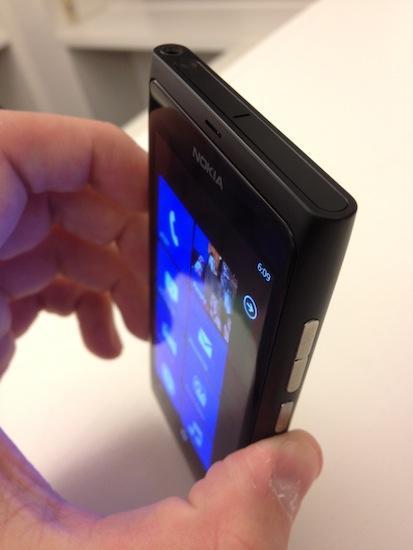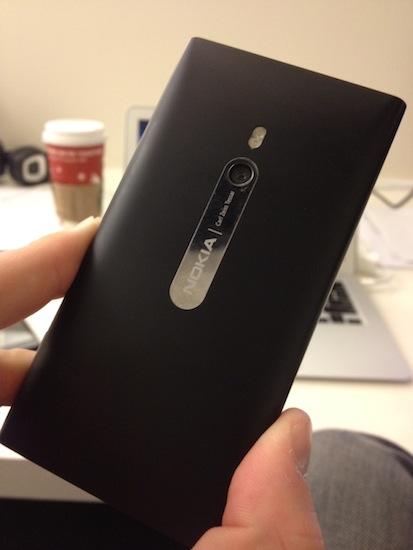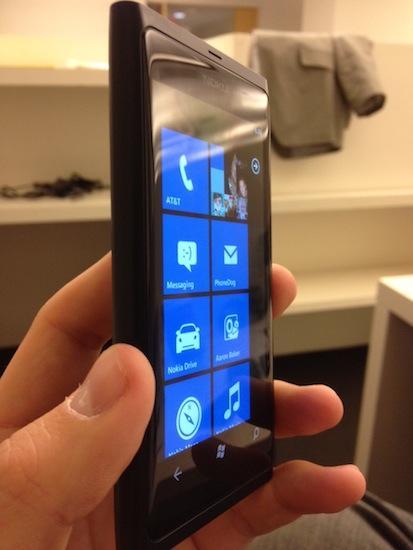
The mobile market is always evolving, but I'll say this: if Nokia brings Windows Phone devices like the Lumia 800 to the US next year, I could see the platform experiencing some growth. The Nokia Lumia 800 is incredibly well designed, offers a powerful feature set (despite the lack of a front-facing camera), sports some great custom applications, and brings a premium feel to Windows Phone. Couple that with Nokia's strong track record in wireless and carrier history (assuming the relationships haven't been strained), and Nokia could make a comeback in the US market.
Nokia CEO Stephen Elop says the Lumia series are the first "real Windows Phones." I've worked with the Lumia 800 for a day, and for the most part, I'm impressed. Much like HTC and Android, I feel as if Nokia and Microsoft can work together to take a platform that's still very much in its infancy to the next level. My thoughts on the device:
- Sure, Windows Phones aren't as diverse as Android smartphones (thanks to the multiple manufacturer-installed) interfaces, but Nokia adds some pizazz with additional apps and a great design. Powered by a 1.4 GHz single-core CPU, the Lumia 800 zips around pretty easily. Windows Phone isn't as system-heavy as the other mobile OSes, but it handled everything from casual web browsing to more graphic-intensive apps like Nokia Maps with ease.

- Yes, Lumia 800 is a gorgeous phone. Nearly identical to the N9 in design, it exudes a high-end feel, from the polycarbonate body to the curved display to the soft, rounded sides. The microSIM card slot and microUSB charging port are located on the top of the phone and hidden behind plastic flaps, and the buttons are all located on the right side. It may be too small for some, but Lumia's 3.7-inch AMOLED display features Nokia's ClearBlack display technology, and looks great as well. Picture quality is fantastic, and I've been able to type on the display with ease.
- At first glance, the software appears to be a typical build of Windows Phone 7.5 (Mango), but Nokia has added a few goodies. Nokia Drive, Nokia Music, and Nokia Maps are all preinstalled and are free. Windows Phone was in desperate need of navigation apps (Google Maps has spoiled me, sorry), and this is certainly a good start.

- I'm a bit disappointed in the 8-megapixel camera. Nokia heralded it as one of the Lumia 800's best features at Nokia World last month, and I'm just not seeing it in comparison to some of the Android options, and of course, the iPhone 4S. Images appear fuzzy and a bit distorted, even with an adequate amount of light. The lack of a front-facing camera is surprising to me, and while I still view it as a niche feature for most, it's kind of disconcerting that Nokia decided to omit it on their flagship device (particularly since Mango supports video calling).
- I haven't worked with the Lumia 800 long enough to get an accurate indication of battery life, but the 1,450 mAh battery seems to be on par with other smartphones on the market. With casual use including calling, text messaging, downloading some apps, browsing the web, and taking a few pictures, I made it about nine hours before the low battery warning flashed on the display. Road warriors and those that are frequently away from power outlets will want to carry a car charger, since the battery isn't removable.

- The Lumia 800 works in the US. Yay! If you're considering buying an unlocked/unbranded model, the Lumia 800 supports AT&T's 3G/HSPA+ bands and T-Mobile's EDGE bands, but be advised that you'll need a microSIM card (iPhone 4/4S users on AT&T will see an easy transition here). So far, call quality has been good on AT&T, and in true Nokia fashion, the wireless radio seems to be strong. My home is in a rough spot for AT&T, and the Lumia 800 consistently maintains 2-3 bars of service. Calls consistently sound clear, and my callers have reported favorable results so far.
As far as Windows Phones go, the Nokia Lumia 800 is a beautiful mobile device that's designed well, despite its lack of a front-facing camera. I have 14 mobile phones on my desk at the time of this writing, and the Lumia 800 stands out in a sort of futuristic way. It's a great start on Nokia's long road to recovery, but I'm sure I speak for everyone on this side of the Atlantic when I say…hurry up and come to North America!